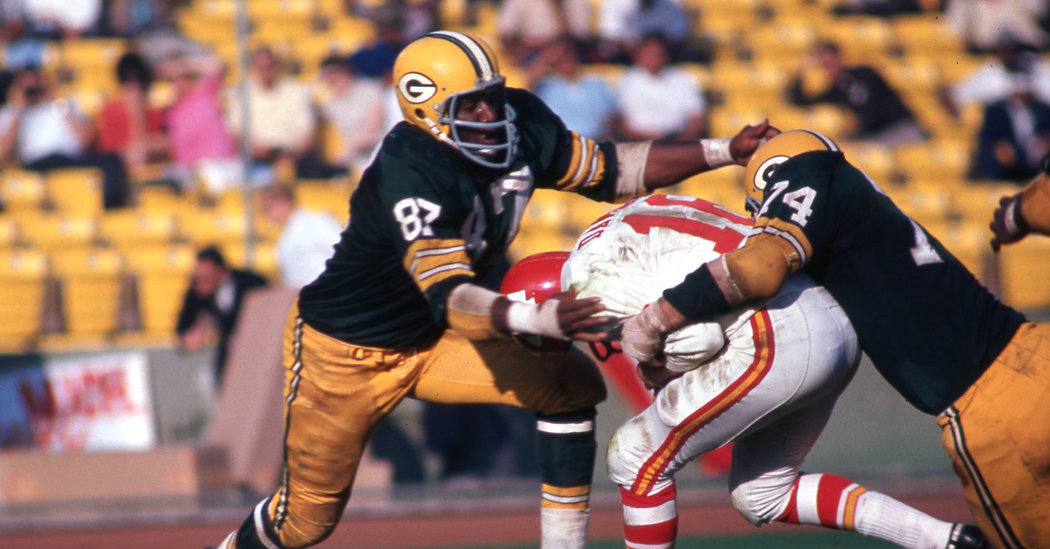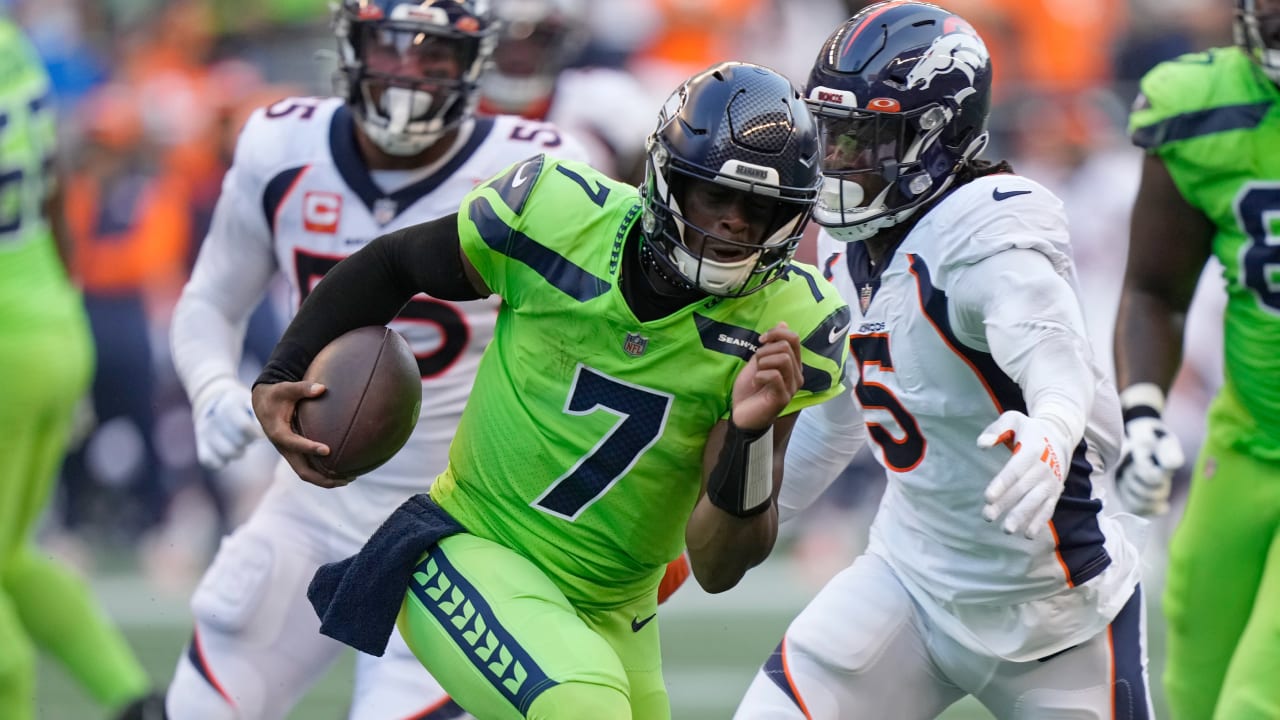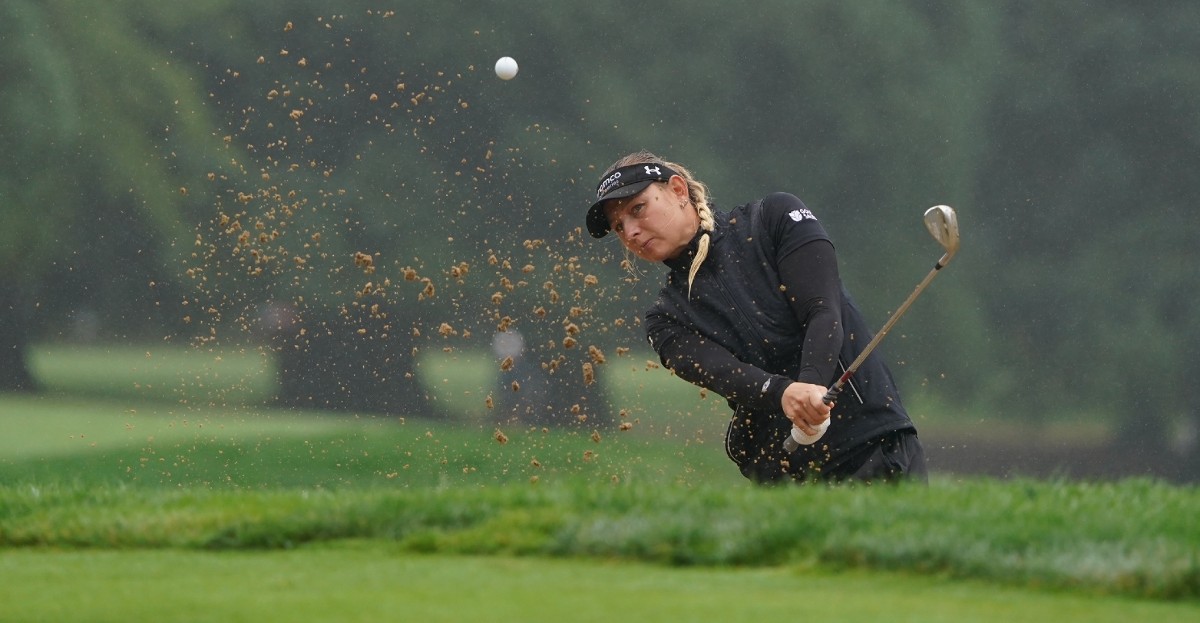
Willie Davis, Packers Hall of Famer, Is Dead at 85
Willie Davis, the Hall of Fame defensive end who played on five Green Bay Packer championship teams and anchored one of pro football’s greatest defensive alignments, died on Wednesday in Santa Monica, Calif. He was 85.
His death was announced by the Packers, who said he had been hospitalized with kidney failure.
Playing in the National Football League for 12 seasons, 10 with the Packers as part off the dynasty built by Coach Vince Lombardi, Davis never missed a game. He was quick, he was smart, and at 6 feet 3 inches and 245 pounds he was a formidable pass rusher and tackler.
“He hated to sit out even a play,” the Packer guard Jerry Kramer recalled.
“Once I was standing on the sidelines when Willie came out of the game with a dislocated finger,” Kramer wrote in “Distant Replay” (1985, with Dick Schaap), a remembrance of Green Bay’s N.F.L. championship teams. “I saw the bone sticking through the skin. The trainer grabbed the finger, yanked the bone back in place, then taped the finger to the adjoining fingers. Willie ran back to the game.”
Davis was only a 15th-round pick in the 1956 N.F.L. draft, chosen by the Cleveland Browns out of Grambling College (now Grambling State University), the historically black college in Louisiana. After Army service and two seasons with the Browns, which shifted him between the defensive and offensive lines, Davis was traded to the Packers in 1960.
He flourished at defensive left end, alongside his fellow Hall of Famers Henry Jordan at tackle, Ray Nitschke and Dave Robinson at linebacker, Herb Adderley at cornerback and Willie Wood (who died in February) at safety.
“Defense is really played with a certain frenzy,” Davis once said. “And my adrenaline flows pretty quickly.”
Davis’s Packer teams captured N.F.L. championships following the 1961, ’62 and ’65 seasons and won the first two Super Bowls, defeating the Kansas City Chiefs in 1967 and the Oakland Raiders in 1968.
Davis was an all-N.F.L. player five times and chosen for the Pro Bowl five times as well. He was elected to the Hall of Fame in 1981 and named to its all-N.F.L. team for the 1960s.
His Packers defeated the Giants in the 1961 and 1962 championship games, and he impressed New York’s star quarterback, Y.A. Tittle. “Davis is a great pass rusher,” Tittle was quoted as saying. “He’s strong and aggressive. He’s always towering over you, coming, coming, all the time.”
Davis was adept at forcing and recovering fumbles. One of his signature plays came against another celebrated quarterback, Johnny Unitas, when the Packers played the Baltimore Colts in December 1966.
With about a minute left in the fourth quarter and the Colts trailing by four points but deep in Packer territory, Unitas sprinted away from his pursuers, looking for a receiver. But Davis, who had circled behind Unitas, caught up with him unseen.
“He was carrying the ball high with his right arm,” Davis told The New York Times after the game. “I aimed to hit him just as hard as I could. I wanted him to fumble that ball. I pulled his arm back and the ball came out.”
Unitas fumbled on the Packers’ 9-yard line; Robinson, the left linebacker, recovered the ball; and the Packers beat the Colts, 14-10, en route to winning the first Super Bowl.
William Delford Davis was born on July 24, 1934, in Lisbon, La., the son of David and Nodie Davis. His father was a laborer. His parents separated when he was 8, and he moved with his mother to Texarkana, Ark., where she worked as a cook at a country club.
An outstanding all-around athlete in high school, David was recruited to Grambling by its renowned coach, Eddie Robinson.
Davis’s mother feared for his safety if he played college football, but Robinson assured her that all would be well.
Davis became a black college All-American, and Grambling went unbeaten in 1955, his senior season.
Pro scouts were on hand to see Willie Galimore, the star running back for Florida A&M, play against Grambling in that season’s Orange Blossom Classic in Miami, an annual postseason game matching Florida A&M against another historically black college. Galimore went on to be an outstanding runner for the Chicago Bears, but Davis caught the scouts’ eyes as well, making a host of tackles in Grambling’s victory.
Davis gained little notice playing two seasons for the Browns, but Lombardi liked what he saw in game films and obtained him in a 1960 trade for A.D. Williams, a receiver, who would last only two more seasons in the league.
As a student, Davis was on the dean’s list at Grambling, majoring in math and industrial arts, and he obtained a master’s degree in business administration from the University of Chicago in 1968, having attended classes in his off-seasons.
After leaving football, he forged a highly successful business career. He owned a beer and wine distributorship in Los Angeles, headed the radio network All-Pro Broadcasting and was a board member of many corporations.
Davis was married three times. His survivors include his wife, Carol; a son, Duane, and a daughter, Lori, from his first marriage; and four grandchildren.
When the Packers obtained Davis in 1960, Lombardi said that Davis had all the attributes any coach would want.
“You look for speed, agility and size,” Lombardi said. “You may get two of these qualities in one man, and when you have three, you get a great player. In Willie Davis, we have a great one.”








